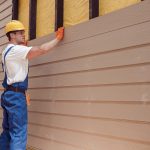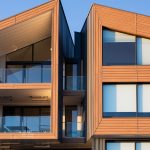
Composite siding combines multiple materials like wood fibers, resins, and plastics to create durable exterior cladding that mimics natural wood while offering superior weather resistance for Wisconsin homes.
Wisconsin homeowners face relentless challenges from harsh winters, ice dams, freeze-thaw cycles, and scorching summers that can destroy traditional siding materials. When your home’s exterior fails, you’re left with costly water damage, skyrocketing energy bills, and the stress of emergency repairs during Wisconsin’s unpredictable weather patterns.
At Prairie Exteriors, our 60+ years of combined experience help Wisconsin families protect their homes with expertly installed composite siding solutions designed to withstand our region’s demanding climate conditions. We focus on providing homeowners with the highest quality products and customer service, installing only products that provide real return on investment for our customers.
Our siding repair in Madison, WI specialists provide comprehensive evaluations to determine if composite siding is right for your home.
Composite Siding Materials and Construction
Composite siding represents a sophisticated blend of engineered materials designed to overcome the limitations of traditional wood siding. The primary components include wood fibers or sawdust, thermoplastic resins (typically polyethylene or polypropylene), and binding agents that create a uniform, durable material.
⚖️ Research from the University of Wisconsin-Madison’s Department of Forest and Wildlife Ecology shows that modern composite materials achieve superior dimensional stability by controlling fiber orientation and resin distribution during manufacturing.
The manufacturing process begins with wood fibers being dried and screened to remove impurities, then combined with plastic resins in precise ratios—typically 50-70% wood fiber and 30-50% plastic resin. This mixture is heated, extruded through specialized dies, and cooled under controlled conditions to create boards with consistent density and strength properties.
The Wisconsin Department of Safety and Professional Services recognizes composite siding materials that meet ASTM D7032 standards for performance in cold climates.
Advanced manufacturing techniques now include co-extrusion processes that create protective caps on composite siding surfaces. These caps, made from 100% polymer material, shield the wood-plastic core from moisture infiltration and UV degradation—critical considerations for Wisconsin’s intense summer sun and winter moisture cycles.
Types of Composite Siding for Wisconsin Homes
Wisconsin homeowners can choose from several composite siding types, each engineered to address specific climate challenges and aesthetic preferences. Understanding these options helps ensure you select materials that will perform reliably in our region’s demanding weather conditions.
✔️ When considering all types of house siding available, composite options stand out for their climate resilience.
Wood-Plastic Composites (WPCs)
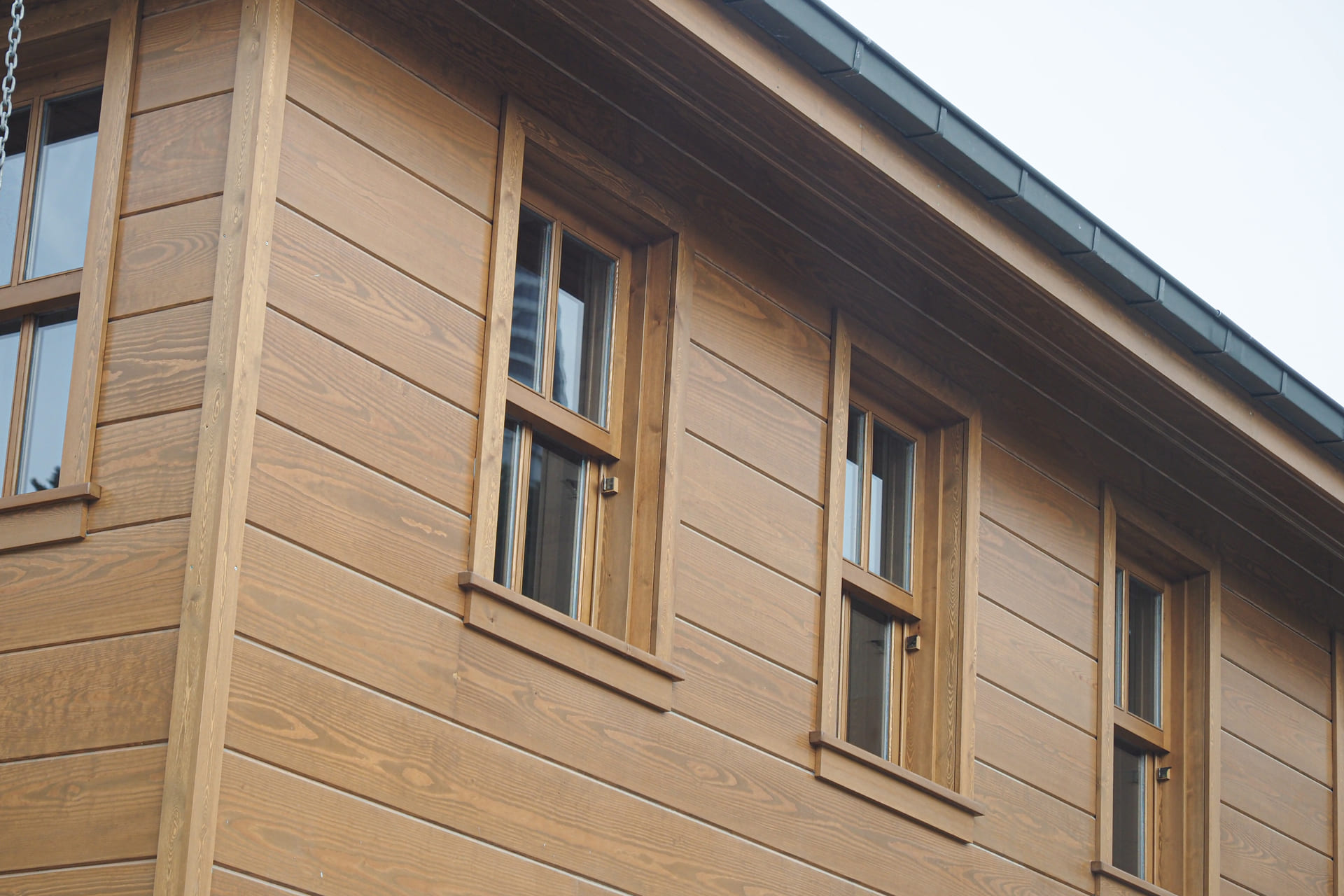
Wood-plastic composites represent the most common type of composite siding, combining recycled wood fibers with thermoplastic materials. These boards offer excellent workability and can be cut, drilled, and installed using traditional woodworking tools.
WPCs perform particularly well in Wisconsin’s climate because the plastic component resists moisture absorption while the wood fibers provide structural stability during temperature fluctuations.
Fiber-Reinforced Composites
Fiber-reinforced composites incorporate glass or synthetic fibers for enhanced strength and durability. These materials excel in high-wind areas common in Wisconsin’s prairie regions, offering superior impact resistance against hail and debris.
The fiber reinforcement also reduces thermal expansion and contraction, minimizing gap formation during Wisconsin’s extreme temperature swings.
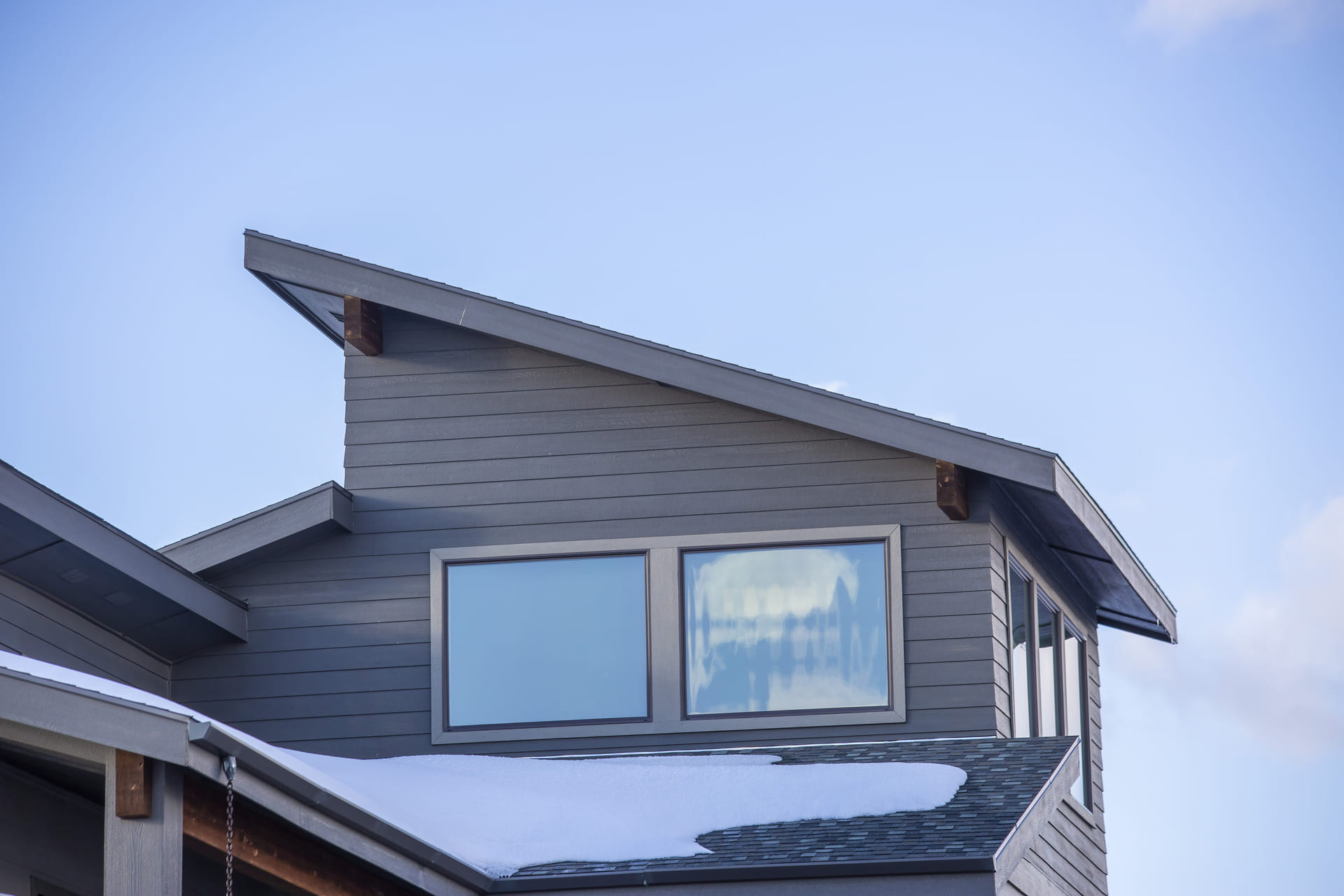
Recycled Synthetic Fiber Composites
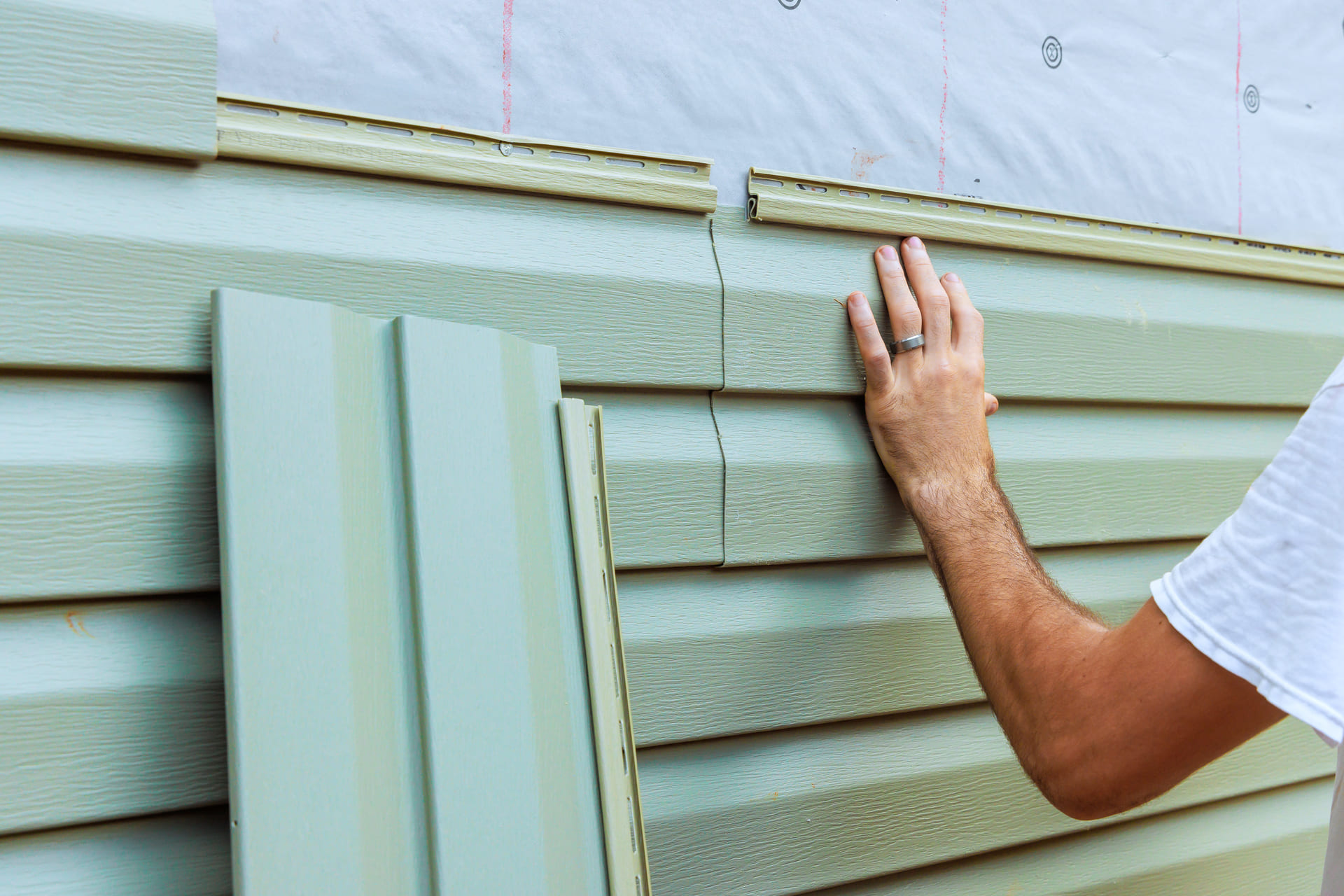
These innovative materials use recycled synthetic fibers combined with polymer binders to create lightweight, durable siding options. Recycled synthetic fiber composites offer excellent resistance to Wisconsin’s freeze-thaw cycles and maintain their appearance longer than traditional wood composites. They’re particularly suitable for homeowners seeking environmentally responsible options without compromising performance.
Engineered Wood Composites
Engineered wood composites utilize specially treated wood strands or chips combined with weather-resistant resins. These materials provide authentic wood grain textures while offering superior moisture resistance compared to natural wood.
In Wisconsin’s humid summers and wet spring seasons, engineered wood composites maintain dimensional stability and resist warping or cupping.
Composite Siding Performance Comparison for Wisconsin Climate
| Composite Type | Durability Rating | Weather Resistance | Maintenance Level | Climate Suitability |
| Wood-Plastic Composites | Good (15-20 years) | Excellent | Low | High for Wisconsin |
| Fiber-Reinforced | Excellent (20-25 years) | Superior | Very Low | Excellent for high-wind areas |
| Recycled Synthetic Fiber | Very Good (18-22 years) | Excellent | Low | Ideal for freeze-thaw cycles |
| Engineered Wood | Good (15-18 years) | Good | Moderate | Good with proper installation |
The Evolution of Composite Siding: From Ancient Times to Modern Wisconsin Applications
Composite materials have ancient origins, with early civilizations combining mud and straw to create durable building materials. However, modern composite siding development began in earnest during the 1990s as manufacturers sought alternatives to traditional wood siding that could withstand harsh climates like Wisconsin’s.
The Wisconsin Historical Society documents how early settlers in our region struggled with wood siding that failed under extreme weather conditions, leading to constant maintenance and replacement cycles. This historical challenge drove innovation in composite materials, with manufacturers developing products specifically designed for cold-climate performance.
✔️ Prairie Exteriors has witnessed this evolution firsthand throughout our decades of experience in the exteriors industry. Our team has transitioned from installing traditional materials to embracing advanced composite technologies that serve Wisconsin homeowners better.
We’ve chosen to only offer products that we would put in our own homes—if we don’t have confidence in a product’s quality, we don’t offer it.
Composite Siding Benefits for the Wisconsin Climate
Wisconsin’s unique climate demands siding materials that can handle extreme temperature variations, heavy snow loads, and persistent moisture challenges. Composite siding offers several advantages specifically suited to our regional conditions.
- Weather Resistance: Composite siding withstands Wisconsin’s freeze-thaw cycles without cracking or splitting like traditional wood. The plastic component prevents water absorption, which causes dimensional changes during temperature fluctuations.
- Energy Efficiency: Modern composite siding provides superior insulation properties compared to vinyl or aluminum siding. Studies from the Wisconsin State Climatology Office indicate that composite siding can reduce heating costs by 15-20% in homes with proper installation and insulation backing.
- Low Maintenance: Unlike wood siding that requires regular painting and staining in Wisconsin’s harsh climate, composite siding maintains its appearance with occasional cleaning. This eliminates the need for frequent maintenance during our short construction seasons.
- Pest Resistance: Wisconsin’s carpenter ant and termite populations cannot damage composite siding materials. The plastic components and treated wood fibers resist insect infiltration, protecting your home’s structure.
💡 Example: A Madison homeowner facing annual ice dams and water stains on their exterior could benefit from composite siding’s moisture resistance and thermal stability. Unlike wood, it won’t absorb water or warp during freeze–thaw cycles. When paired with proper attic insulation and roof ventilation, composite siding helps minimize ice buildup and protect the home’s structure through Wisconsin’s harsh winters.
Our siding installation in Sun Prairie, WI team specializes in climate-appropriate installations that maximize these performance benefits.
Potential Drawbacks and Considerations
While composite siding offers numerous advantages for Wisconsin homes, understanding potential limitations helps homeowners make informed decisions about their exterior investment.
- Higher Initial Investment: Composite siding costs 20-40% more than vinyl siding initially, though long-term savings from reduced maintenance and energy efficiency often offset higher upfront costs. Wisconsin homeowners should consider total lifetime costs rather than initial purchase price.
- Installation Complexity: Proper composite siding installation requires specialized knowledge of expansion gaps, fastening techniques, and moisture management. Wisconsin’s building codes mandate specific installation practices for cold climates that inexperienced contractors may overlook.
- Moisture Sensitivity: While composite siding resists moisture better than wood, improper installation can allow water infiltration. Cut ends and improperly sealed joints remain vulnerable to Wisconsin’s heavy precipitation and snow loads.
📌 Prairie Exteriors’ factory-trained installation teams understand Wisconsin-specific installation requirements. With special manufacturers’ warranties and factory-trained installation methods, we ensure proper expansion gaps, flashing details, and moisture management that prevent these common issues.
Composite Siding vs. Other Materials: A Wisconsin Comparison
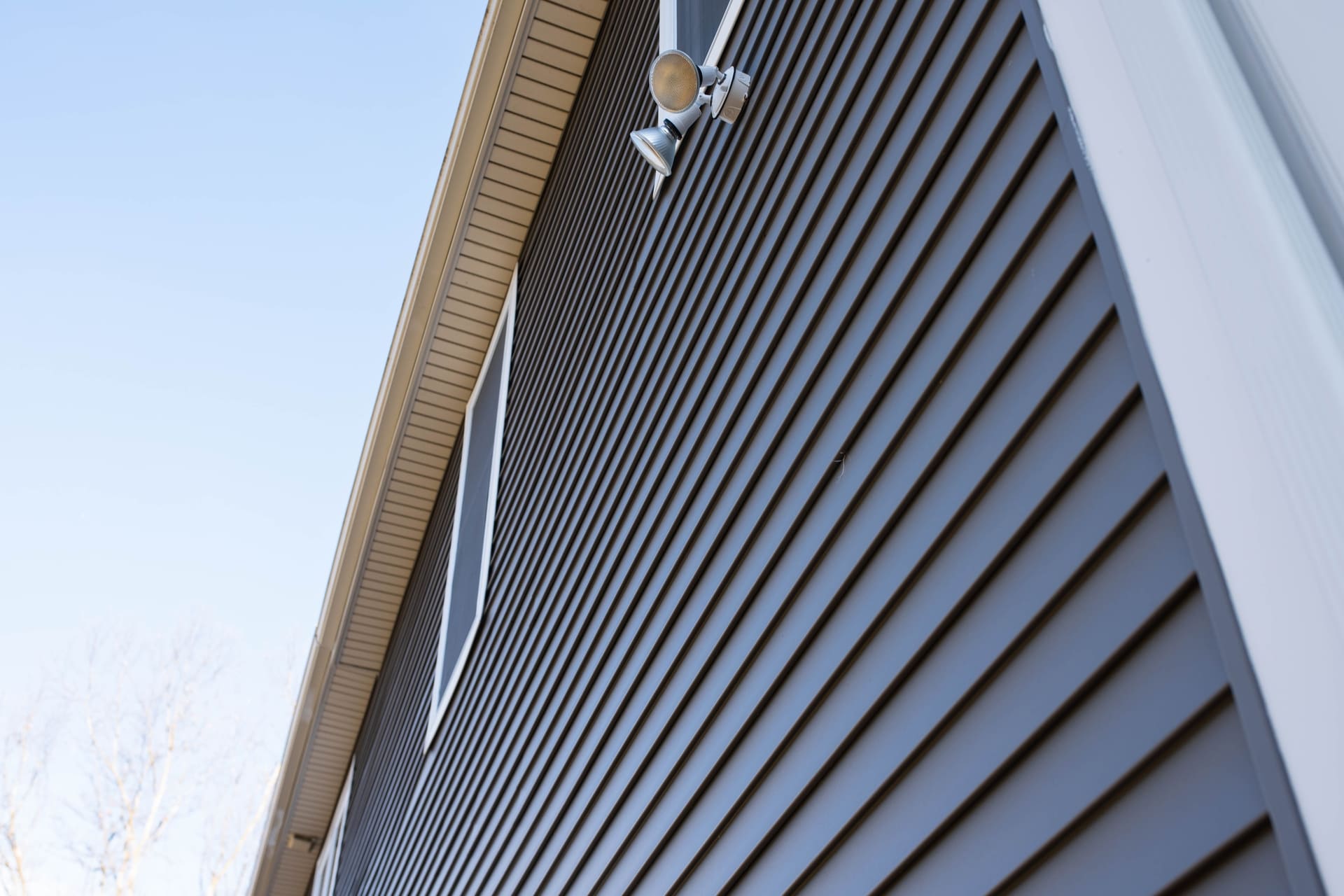
Wisconsin homeowners have multiple siding options, each with distinct performance characteristics in our challenging climate. Understanding how composite siding compares to alternatives helps inform your decision-making process.
Composite siding outperforms vinyl siding in Wisconsin’s temperature extremes, maintaining flexibility in cold weather while resisting heat distortion during summer months. Unlike vinyl, composite siding won’t become brittle at -20°F temperatures common in Wisconsin winters. Fiber cement siding offers superior fire resistance and longevity, but requires more maintenance and costs significantly more than composite options.
Wood siding provides authentic natural beauty but demands constant maintenance in Wisconsin’s climate. Traditional wood expands and contracts dramatically with humidity changes, leading to paint failure and moisture infiltration. Metal siding offers excellent durability but conducts temperature extremes, potentially creating condensation issues in Wisconsin’s humid conditions.
Wisconsin Climate Siding Performance Comparison
| Material | Lifespan (Years) | Maintenance Level | Cold Weather Performance | Wisconsin Climate Rating |
| Composite | 15-25 | Low | Excellent | Excellent |
| Vinyl | 10-15 | Very Low | Good | Good |
| Fiber Cement | 25-30 | Moderate | Excellent | Very Good |
| Wood | 15-20 | High | Poor | Poor |
| Metal | 20-30 | Low | Good | Good |
Installation Considerations for Wisconsin Homes
Successful composite siding installation in Wisconsin requires careful attention to climate-specific requirements and local building codes that address our region’s unique weather challenges.
- Wisconsin Building Code Requirements: The Wisconsin Department of Safety and Professional Services requires specific vapor barrier installations and insulation backing for composite siding in climate zones 6 and 7. These requirements ensure proper moisture management and energy efficiency.
- Seasonal Installation Timing: Optimal composite siding installation in Wisconsin occurs during late spring through early fall when temperatures remain consistently above 40°F. Cold-weather installation requires special precautions for material handling and fastening techniques.
- Insulation and Vapor Barrier Considerations: Wisconsin’s high humidity summers and cold winters demand proper vapor barrier placement behind composite siding. Incorrect installation can trap moisture, leading to mold growth and structural damage.
💡 When planning a siding replacement in South-Central Wisconsin, homeowners should consider scheduling installations between May and October for optimal material performance and worker safety during installation.
Cost Considerations and Return on Investment
Composite siding represents a significant investment for Wisconsin homeowners, but understanding the total cost picture helps justify the initial expense through long-term savings and increased home value.
Wisconsin composite siding costs typically range from $8-15 per square foot installed, depending on product quality, home complexity, and regional labor rates. Factors affecting costs include removal of existing siding, necessary repairs to the underlying structure, and additional insulation or moisture barrier upgrades required by Wisconsin building codes.
Return on investment calculations must consider Wisconsin’s harsh climate impact on maintenance costs. Traditional wood siding requires repainting every 3-4 years in our climate, costing $3,000-8,000 per application. Composite siding eliminates these recurring expenses while providing energy savings averaging $200-400 annually through improved insulation properties. Siding replacement projects in the Midwest typically provide strong returns on investment at resale.
Wisconsin Composite Siding Investment Analysis
| Cost Factor | Wood-Plastic Composite | Fiber-Reinforced | Premium Capped Composite |
| Material Cost (per sq ft) | $3-6 | $5-8 | $7-12 |
| Installation Cost | $3-5 | $4-6 | $5-8 |
| Annual Maintenance | <$100 | <$50 | <$25 |
| Expected Lifespan | 15-20 years | 20-25 years | 25-30 years |
⚖️ While premium modern exterior siding options have a higher upfront cost, their longer lifespan and minimal upkeep often make them the most cost-effective choice over time.
Maintenance and Longevity in Wisconsin’s Climate
📌 Proper maintenance extends composite siding life and preserves its appearance throughout Wisconsin’s challenging seasonal cycles.
- Seasonal Maintenance Recommendations: Spring cleaning removes winter salt and debris accumulation, while fall inspections identify any damage from summer storms. Wisconsin homeowners should power wash composite siding annually using gentle pressure to avoid surface damage.
- Expected Lifespan in Wisconsin Conditions: Quality composite siding lasts 15-30 years in Wisconsin’s climate with minimal maintenance. Premium capped composite products can exceed 25-year lifespans when properly installed and maintained.
- Warning Signs to Watch: Fading, chalking, or cracking indicate potential moisture infiltration or UV damage. Gaps between boards or loose fasteners require immediate attention to prevent water damage during Wisconsin’s heavy precipitation periods.
⚖️ Consider the long-term performance potential of composite siding installations in the Madison area that show minimal fading and structural issues after decades, demonstrating the material’s durability in Wisconsin’s challenging climate conditions when properly installed.
Choosing the Right Composite Siding for Your Wisconsin Home
Selecting appropriate composite siding requires careful consideration of your home’s specific exposure conditions, architectural style, and long-term maintenance preferences within Wisconsin’s climate constraints.
Home exposure to prevailing winds, direct sunlight, and moisture sources influences composite siding selection. South-facing walls in Wisconsin receive intense UV exposure during the summer months, benefiting from UV-resistant capped composite products. North-facing surfaces experience minimal direct sun but higher moisture retention, requiring superior moisture resistance.
Budget considerations should encompass total lifetime costs rather than initial investment alone. Premium composite siding costs more initially but provides superior longevity and lower maintenance requirements. Wisconsin homeowners planning long-term residence should prioritize quality over initial savings to maximize investment returns.
💡 Example: A homeowner in Sun Prairie compared several composite siding options and found that using premium capped composite on front and side elevations—while installing standard composite on less visible areas—delivered the best balance of appearance, durability, and cost.
At Prairie Exteriors, our team helps Wisconsin homeowners create tailored siding plans like this, combining material performance with smart budgeting to maximize both curb appeal and long-term value.
Professional Installation With Prairie Exteriors: Why It Matters in Wisconsin
Professional installation ensures composite siding performs optimally throughout Wisconsin’s extreme weather conditions while maintaining manufacturer warranty coverage and long-term durability.
Proper installation techniques specific to Wisconsin’s climate include correct expansion gap calculations, appropriate fastening patterns for wind loads, and moisture barrier integration that prevents condensation issues.
Wisconsin contractor licensing requirements mandate specific training and insurance coverage that protects homeowners from installation defects and liability issues. Our division managers, project managers, and owner are all capable construction professionals with extensive experience in Wisconsin’s demanding climate.
⚠️ Prairie Exteriors’ factory-certified installation teams understand manufacturer specifications and Wisconsin building code requirements. Our primary focus is on providing homeowners with the highest quality products and customer service in the industry, ensuring your composite siding investment provides maximum performance and warranty protection throughout our region’s challenging climate conditions.
Contact our expert team at (608) 370-2528 for a comprehensive evaluation of your
home's composite siding needs and professional installation services.
Frequently Asked Questions
Can composite siding be installed during Wisconsin winters?
Composite siding installation during Wisconsin winters is technically possible but not recommended. Most manufacturers specify installation temperatures above 40°F for optimal material flexibility and fastening performance. Cold weather makes composite boards brittle and difficult to cut cleanly, potentially voiding manufacturer warranties.
How does composite siding handle Wisconsin’s hailstorms?
Quality composite siding withstands moderate hail impact better than vinyl but may dent or crack under severe hail conditions. Fiber-reinforced composite options provide superior impact resistance for Wisconsin homes in high-risk hail zones. Most homeowner insurance policies cover hail damage to composite siding installations.
What warranty coverage comes with composite siding?
Most composite siding manufacturers offer 15-30 year limited warranties covering material defects and fade resistance. Warranty terms vary by manufacturer and product line, with premium products typically offering longer coverage periods. Professional installation by certified contractors is usually required to maintain full warranty protection.
Does composite siding work well with Wisconsin’s building energy codes?
Composite siding integrates effectively with Wisconsin’s energy efficiency requirements when installed with proper insulation and vapor barriers. The material’s insulation properties help homes meet or exceed Wisconsin’s energy codes, particularly when combined with continuous insulation systems behind the siding.
How does composite siding perform in Wisconsin’s high-humidity summers?
Quality composite siding handles Wisconsin’s humid summers well due to its moisture-resistant properties. The plastic components prevent water absorption that causes swelling and warping in traditional wood materials. Proper installation with adequate ventilation ensures optimal performance throughout Wisconsin’s humid summer months.



